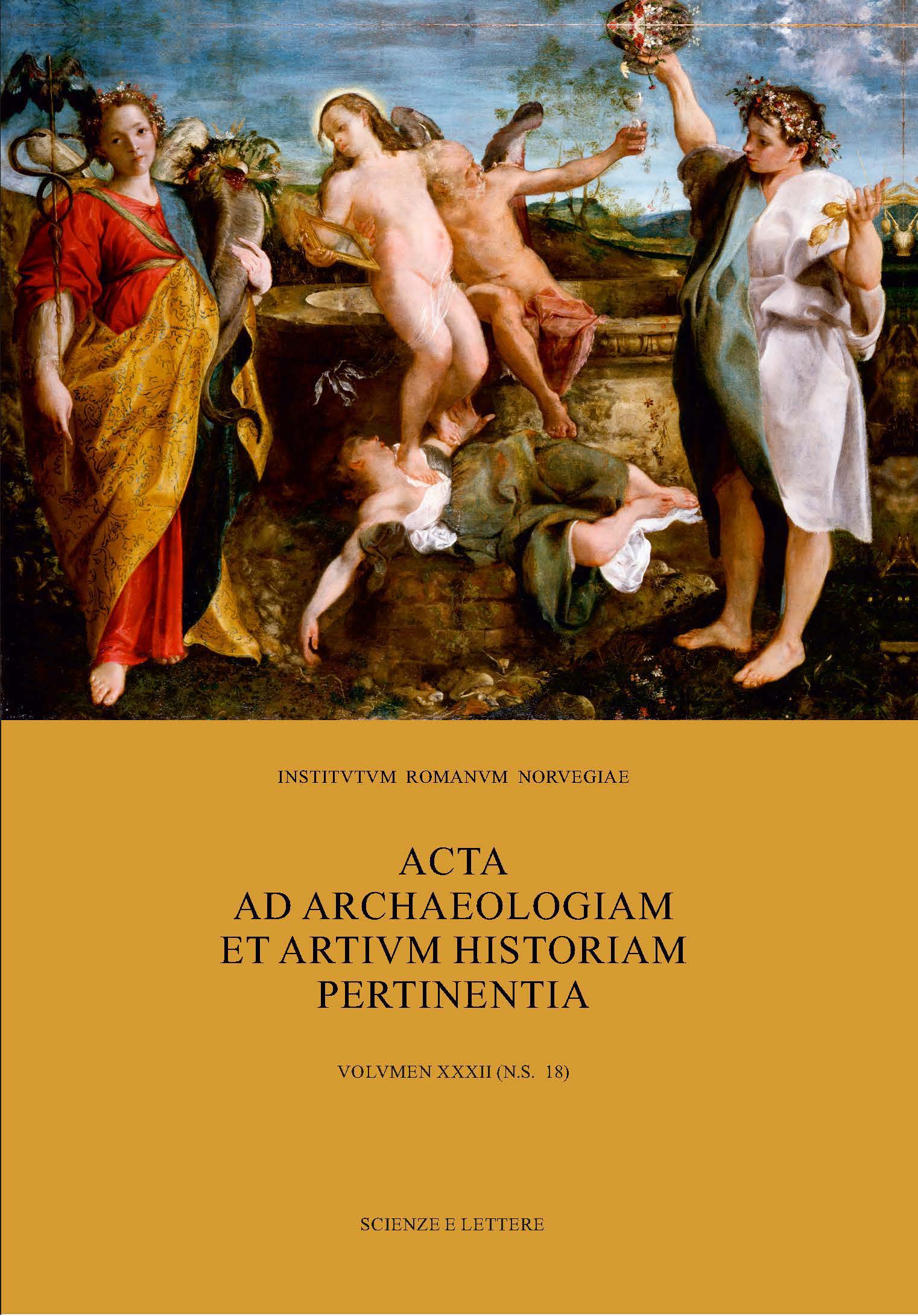'The reality effect': the figure seen from behind in Carracci's art
DOI:
https://doi.org/10.5617/acta.9025Keywords:
body in art, San Michele in Bosco (Monastery : Bologna: Italy), Palazzo Fava (Bologna: Italy), reality effect, naturalism in painting, painting RenaissanceAbstract
This article focuses on Carracci's frequent use of the figure seen from behind in their graphic and pictorial oeuvre (i.e., in the frescoes in Palazzo Fava, in the Cloister of San Michele in Bosco by Ludovico, in the series of the body in art by Annibale, and the engravings Ogni cosa vince l'oro by Agostino). It claims that the figure seen from behind plays a rhetorical function instrumental to the Carracci's search for a new form of naturalism in painting. In particular it creates a 'reality effect' that enhances the naturalistic rendering of the pictorial composition.
On cover:
ANNIBALE CARRACCI (BOLOGNA 1560 - ROME 1609), An Allegory of Truth and Time c. 1584-1585.
Oil on canvas | 130,0 x 169,6 cm. (support, canvas/panel/str external) | RCIN 404770
Royal Collection Trust / © Her Majesty Queen Elizabeth II 2021.
Downloads
Published
How to Cite
Issue
Section
License

This work is licensed under a Creative Commons Attribution-NonCommercial 4.0 International License.

This work is licensed under a Creative Commons Attribution-NonCommercial 4.0 International License.
Authors who publish with this journal agree to the following terms:
- Authors retain copyright and grant the journal right of first publication with the work simultaneously licensed under a Creative Commons Attribution License that allows others to share the work with an acknowledgment of the work's authorship and initial publication in this journal.
- Authors are able to enter into separate, additional contractual arrangements for the non-exclusive distribution of the journal's published version of the work (e.g., post it to an institutional repository or publish it in a book), with an acknowledgement of its initial publication in this journal.
- Authors are permitted and encouraged to post their work online (e.g., in institutional repositories or on their website) prior to and during the submission process, as it can lead to productive exchanges, as well as earlier and greater citation of published work (See The Effect of Open Access).





